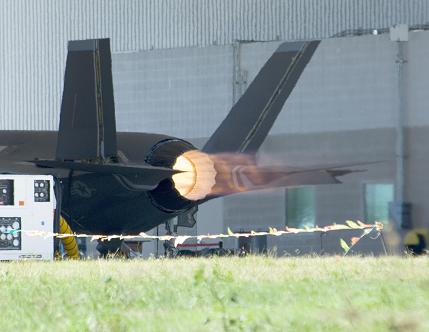Lockheed Martin has completed initial engine ground runs on the first F-35 Joint Strike Fighter, moving the Lightning II a step closer to a first flight before year-end. The installed engine was started for the first time on 15 September, culminating in a full-afterburner test three days later during which the Pratt & Whitney F135 turbofan generated almost 40,000lb of thrust.

Picture: Lockheed Martin
Although the F-35’s first flight continues to slip, Lockheed points to the rapid move from engine start to full afterburner as a sign of the programme’s continued progress. “Previous programmes have taken several months to progress from initial onboard power to engine start and full afterburner,” says Doug Pearson, vice-president of the F-35 integrated test force.
The first F-35, aircraft AA-1, has been returned to the hangar at Fort Worth in Texas for installation of the final flight-qualified components, with a first flight now expected between mid-November and mid-December. “We think we will this year, but the real answer is we will fly when the aircraft is ready,” says Pearson.
The engine was started using the F-35’s Honeywell-developed integrated power package (IPP), a combined starter/generator, electrical power supply and environmental control system that saves space and weight. The IPP was started in the aircraft for the first time on 7 September, and performed as expected, he says.
“The IPP started first time, every time, and generated the very high-current power needed to start the main engine,” Pearson says. “The main engine was very similar, starting the first time it was commanded.” Further ground tests and engine runs are planned following completion of the build phase now under, followed by taxi tests and leading to a first flight later in the year.
Source: FlightGlobal.com























